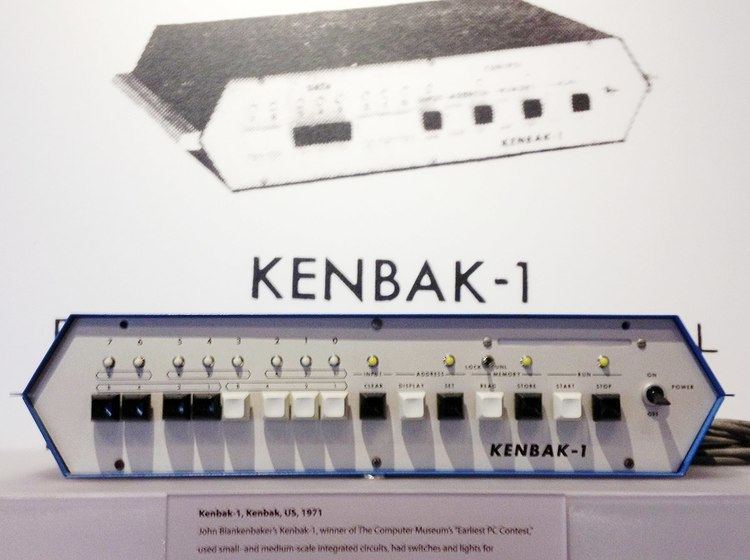Developer John Blankenbaker Discontinued 1973 (1973) | Manufacturer Kenbak Corporation Introductory price US$750 | |
 | ||
Release date 1971; 46 years ago (1971) | ||
The Kenbak-1 is considered by the Computer History Museum and the American Computer Museum to be the world's first "personal computer", invented by John V. Blankenbaker (1930-) of Kenbak Corporation in 1970, and first sold in early 1971. Only 50 machines were ever built. The system first sold for US$750. Today only 14 machines are believed to exist worldwide, in the hands of various collectors. Production of the Kenbak-1 stopped in 1973 as Kenbak failed, and was taken over by CTI Education Products, Inc. CTI rebranded the inventory and renamed it the H5050, though sales remained elusive.
Since the Kenbak-1 was invented before the first microprocessor, the machine didn't have a one-chip CPU but instead was based purely on small-scale integration TTL chips. The 8-bit machine offered 256 bytes of memory, implemented on Intel's type 1404 silicon gate MOS shift registers. The instruction cycle time was 1 microsecond (equivalent to an instruction clock speed of 1 MHz), but actual execution speed averaged below 1000 instructions per second due to architectural constraints such as slow access to serial memory.
The machine was programmed in pure machine code using an array of buttons and switches. Output consisted of a row of lights.
